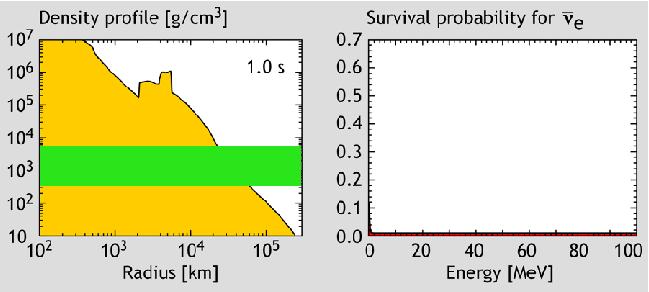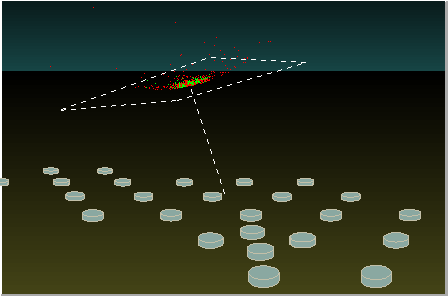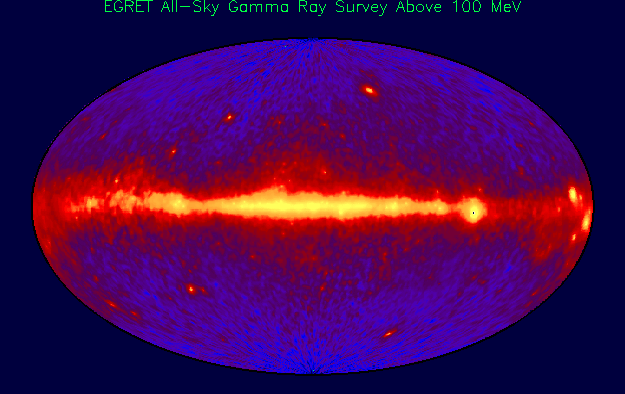A supernova (SN) core is approximately a blackbody source for a huge neutrino burst of all flavors. In detail, however, there are differences between the fluxes and spectral energies of ν_e, anti-ν_e, and ν_x. Therefore, one may be able to discover neutrino oscillation effects in a future SN neutrino signal. For example, one may hope to distinguish between the normal and inverted neutrino mass hierarchy, one of the important remaining questions in the area of neutrino physics.
Of most importance for astrophysics is the information carried by the neutrino signal about the details of the explosion mechanism deep inside the SN core that is otherwise not accessible. For instance, the passage of shock waves through the region of resonant neutrino flavor conversion allows one to perform a detailed tomography of the SN interior.
 |
Supernova shocks:
The movie in avi format shows a forward and a reverse shock front passing through the region of "atmospheric" resonant neutrino oscillations (green band) on the left together with the survival probability of a anti-ν_e for large θ_13. On the left the (uninteresting) first image 1 sec after core bounce is shown. For details see R. Tomas, M. Kachelrieß, G. Raffelt, A. Dighe, H.-T. Janka and L. Scheck, Neutrino signatures of supernova forward and reverse shock propagation. JCAP 0409, 015 (2004) [astro-ph/0407132] or here for a version with full resolution figures. |

